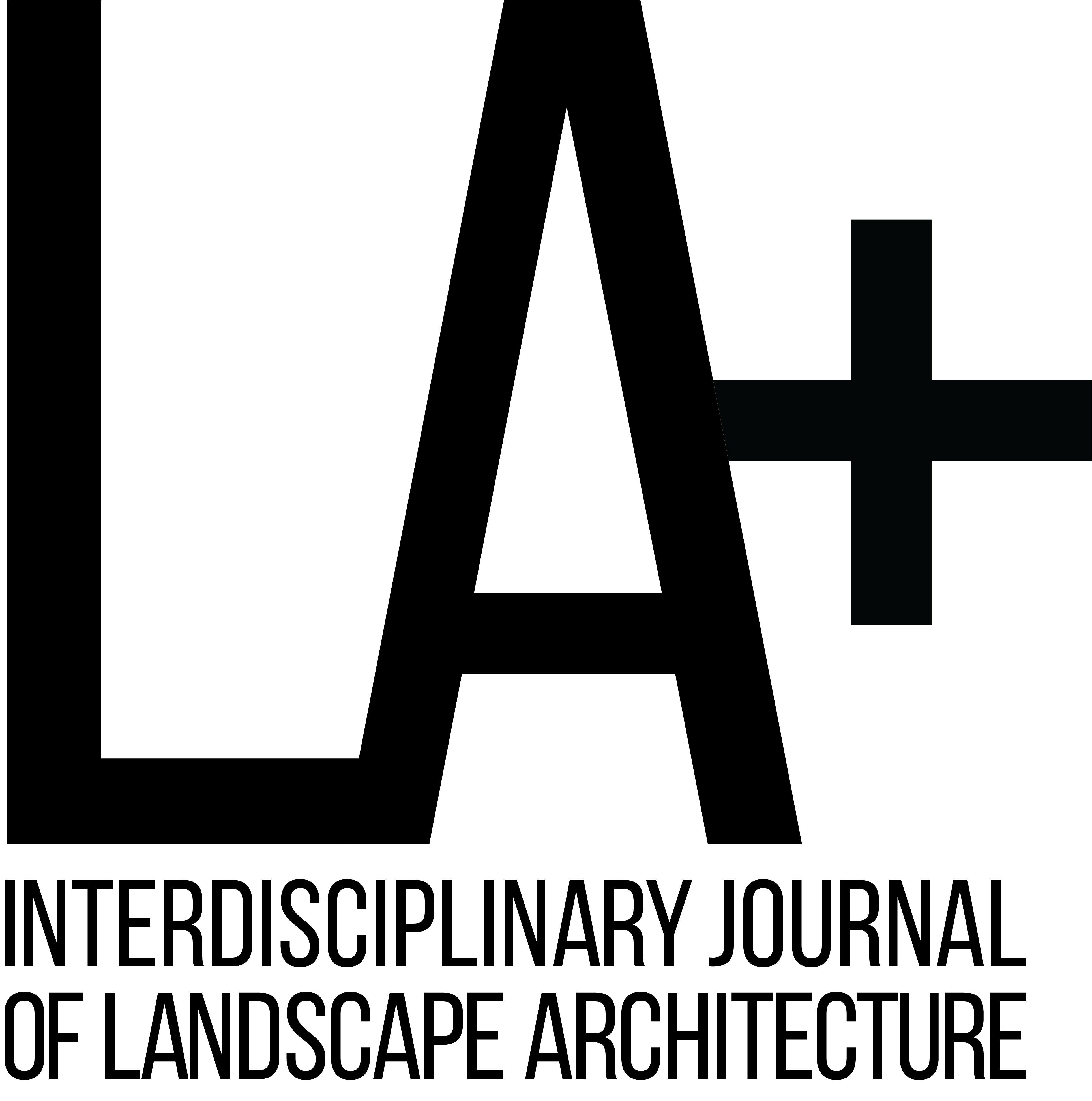
WINNING DESIGNS
The following five designs from Canada, China, South Korea, and the United States were declared winners by LA+ CREATURE’s eminent interdisciplinary jury. Each winning entry receives $2,000 plus feature publication in LA+ Journal’s forthcoming LA+ CREATURE issue (Fall 2021).
NIKO DELLIC + AMBIKA PHARMA (CANADA)
MANGROVE HORSESHOE CRAB | Carcinoscorpius Rotundicauda


The blood of more than 500,000 horseshoe crabs is extracted every year to supply the biomedical field with lifesaving chemicals. Their blood cells are used as a detection system for any harmful bacteria that could show up in vaccines and medical tools. With the anticipated development of five billion COVID-19 vaccines, blood harvesting will likely increase considerably. While synthetic alternatives have been developed and are awaiting approval from governing bodies, a replacement isn't necessarily beneficial for the crabs: they have been better protected in recent years as a resource for the biomedical field than in the previous century when their population was rapidly dwindling. The proposed strategy exists at the intersection of exploitation and conservation, proposing a regulatory law to guarantee the continued blood harvesting of horseshoe crabs, and reserving synthetic alternatives for pandemics and abnormal demand. The design is sited on Sagar Island—the habitat of the especially vulnerable Mangrove Horseshoe Crab (Carcinoscorpius Rotundicauda)—where climate change, coastal urbanization, and fisheries have resulted in considerable habitat loss. The design strives to reduce mortality and increase the reproduction rate of the bled horseshoe crabs by creating synthetic mangroves on old shipping barges. These would act as harvesting and rehabilitation centers for what has been identified as a crucial two-week period where the bled horseshoe crabs are disoriented, weak, and have trouble spawning. The design of these synthetic mangroves includes shallow beach pools and lanterns with a blue hue (Purkinje effect) to simulate the light of a full moon, both of which are breeding stimulants for the horseshoe crab. From there, the crabs partake in a breeding process that is nothing short of an orgy.
CATHERINE VALVERDE, YOUZI XU + ELIZABETH SERVITO (UNITED STATES/CHINA)
CALIFORNIA TIGER SALAMANDER | Ambystoma californiense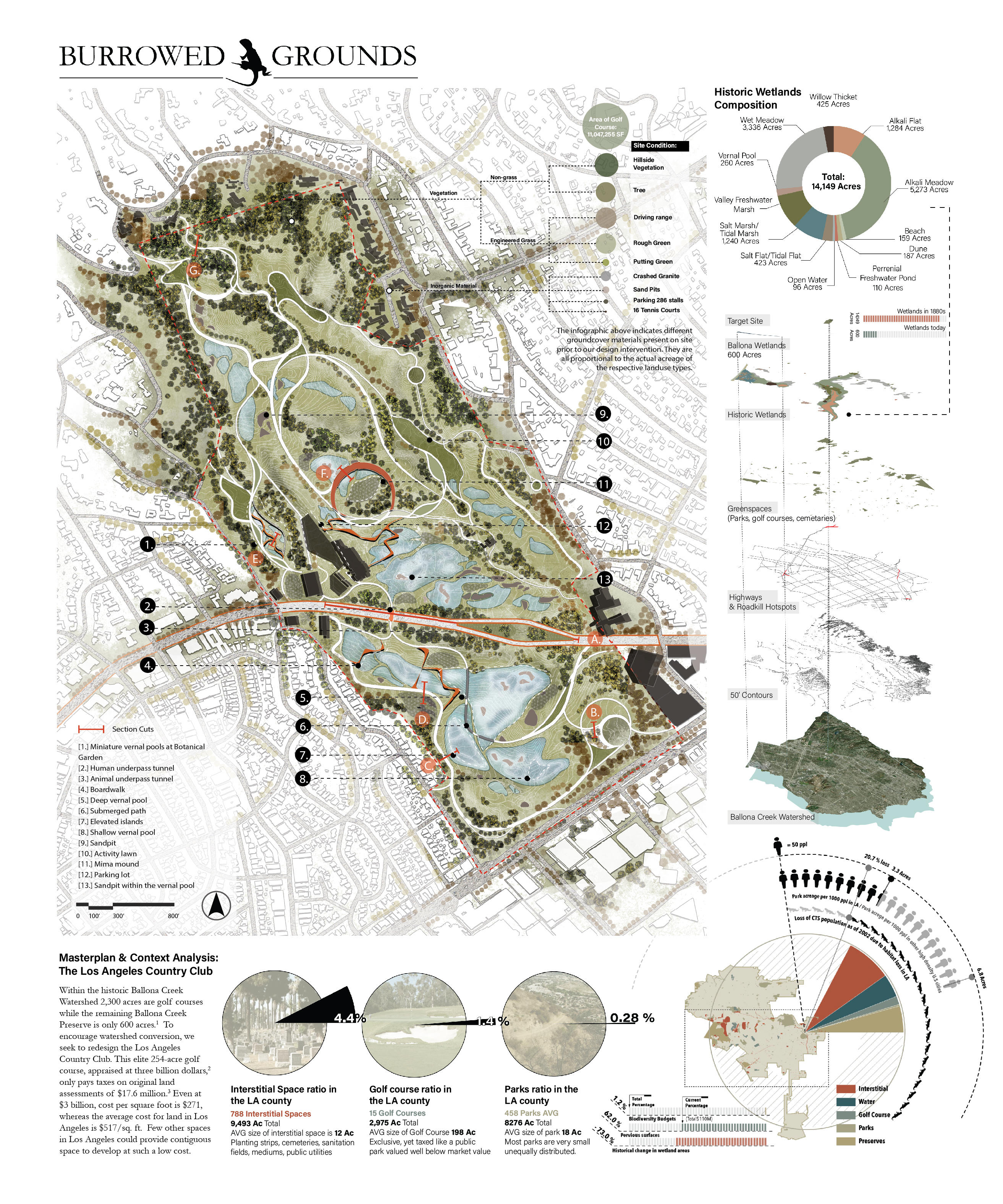

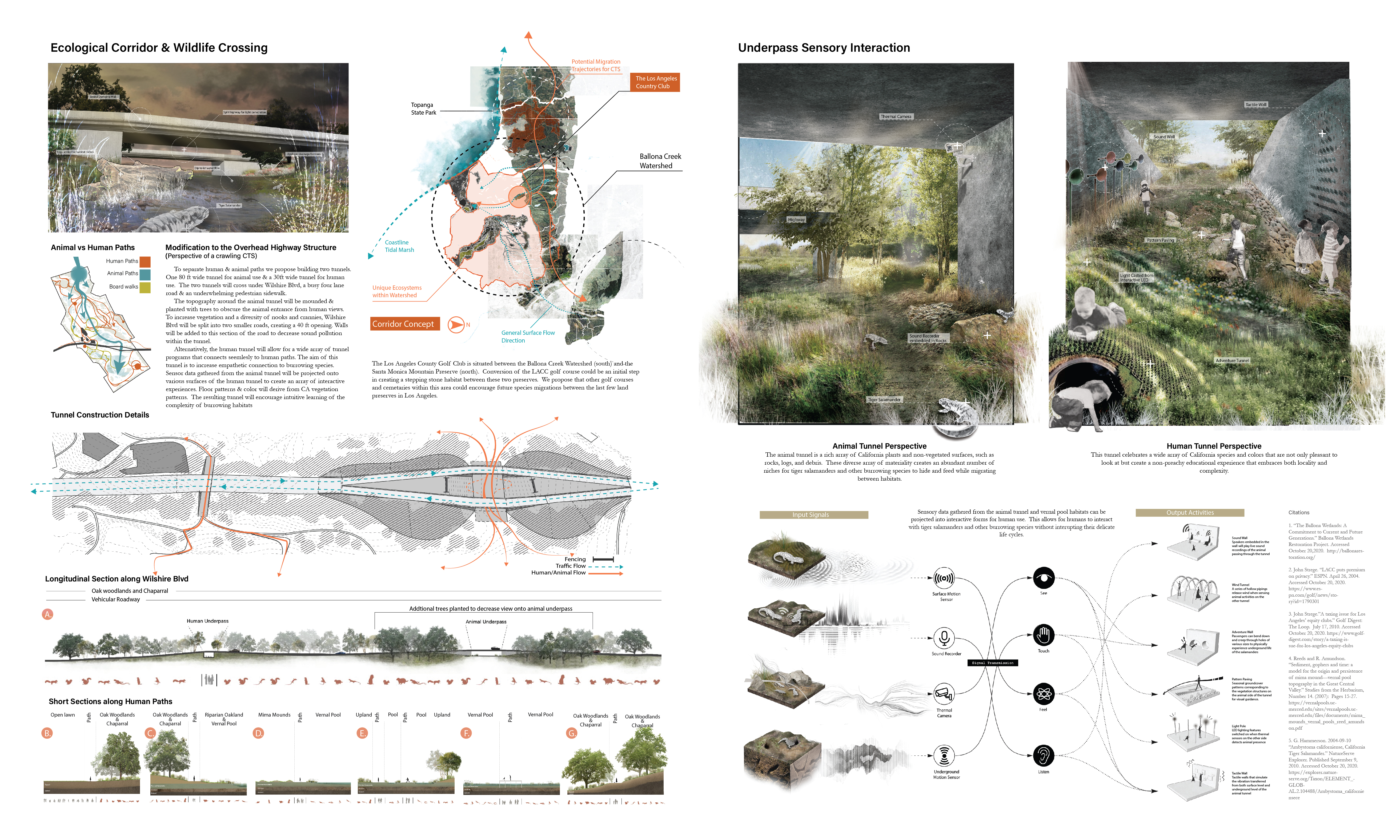
As the air cools, little critters hiding in abandoned ground squirrel tunnels emerge into the night. One wiggles out displaying an array of yellow spots. After months of rain, it’s time for this California tiger salamander to migrate to her breeding ground. In the past, this six-inch, thick-bodied amphibian could travel to one of many vernal pools in the Ballona Creek Watershed. Today, her options are slim. The 130 m2 Ballona Creek watershed was once home to over 14,000 acres of salamander-friendly wetlands and is now home to 1.2 million people. Today only 4% of the original wetland remains. Watershed loss and mass extermination of native ground squirrels and gophers—whose burrows provide terrestrial homes to the California tiger salamander—has led to the collapse of the salamander population. But there is hope; golf courses could be affordable sites to restore wetlands. We seek to redesign the Los Angeles Country Club to restore salamander habitats on golf courses through three strategies: vegetate, separate, and celebrate. To vegetate is to restore a diverse array of Californian plant communities that withstand seasonal droughts and support vernal pools. Vegetation will be deployed depending on slope, aspect, and proximity to existing trees and development. To separate is to create a system of human paths and tunnels to protect animal habitats from foot traffic. Humans and animals can safely cross the 80-foot-wide Wilshire Boulevard using separate underpasses. The animal tunnel will have embedded sensors that transmit information on animal migration onto the human tunnel’s surfaces to increase awareness of the salamander population to human visitors. Finally, to celebrate a new California aesthetic, components of the European golf course will be replaced with a Californian botanical garden. As water from the wet season evaporates in spring, rings of flowers encircle vernal pools, enhancing awareness of wetness gradients throughout the park topography.
BINGJIAN LIU, HEEJUNG SHIN + ESTHER JUNG (CHINA/SOUTH KOREA/UNITED STATES)
AMERICAN EEL | Anguilla Rostrata
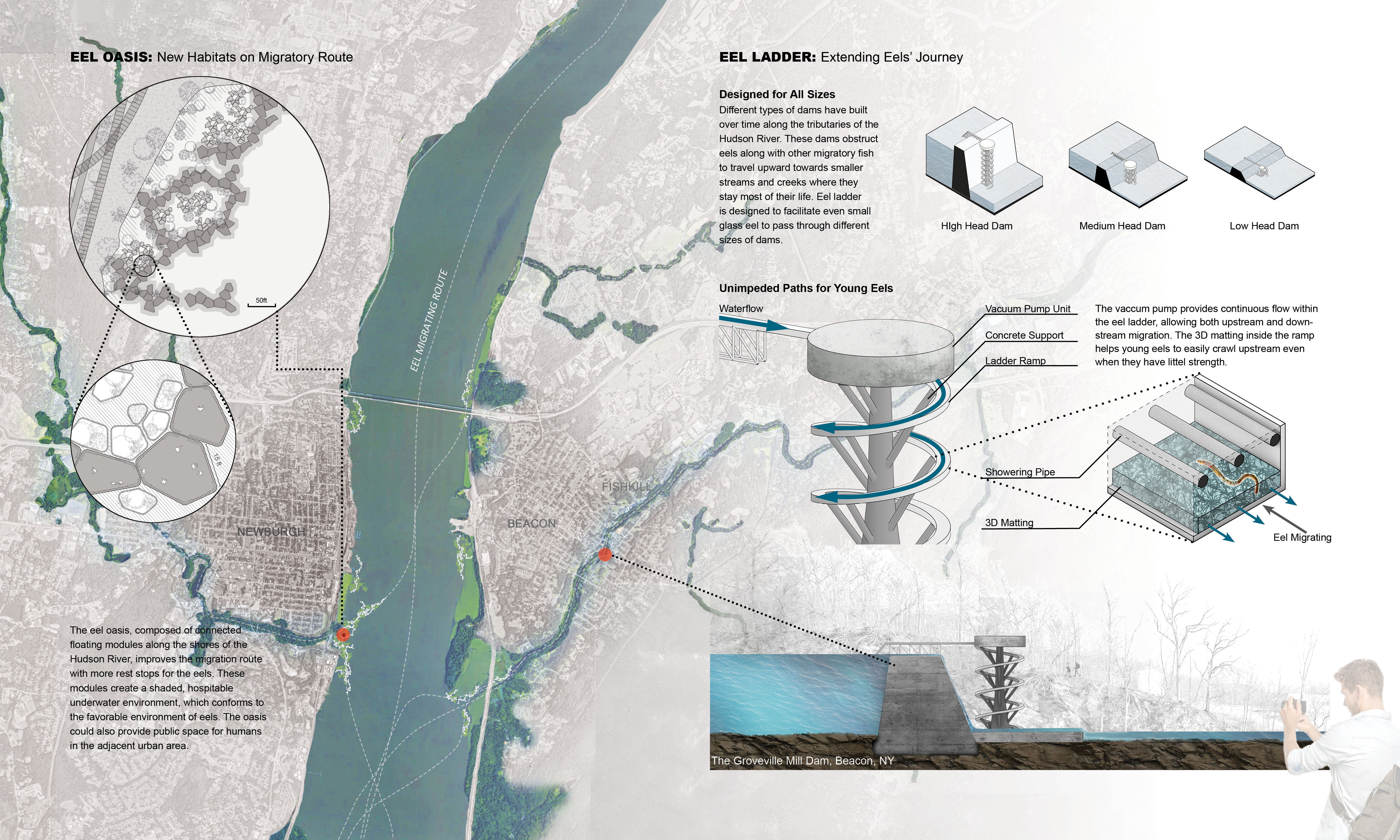
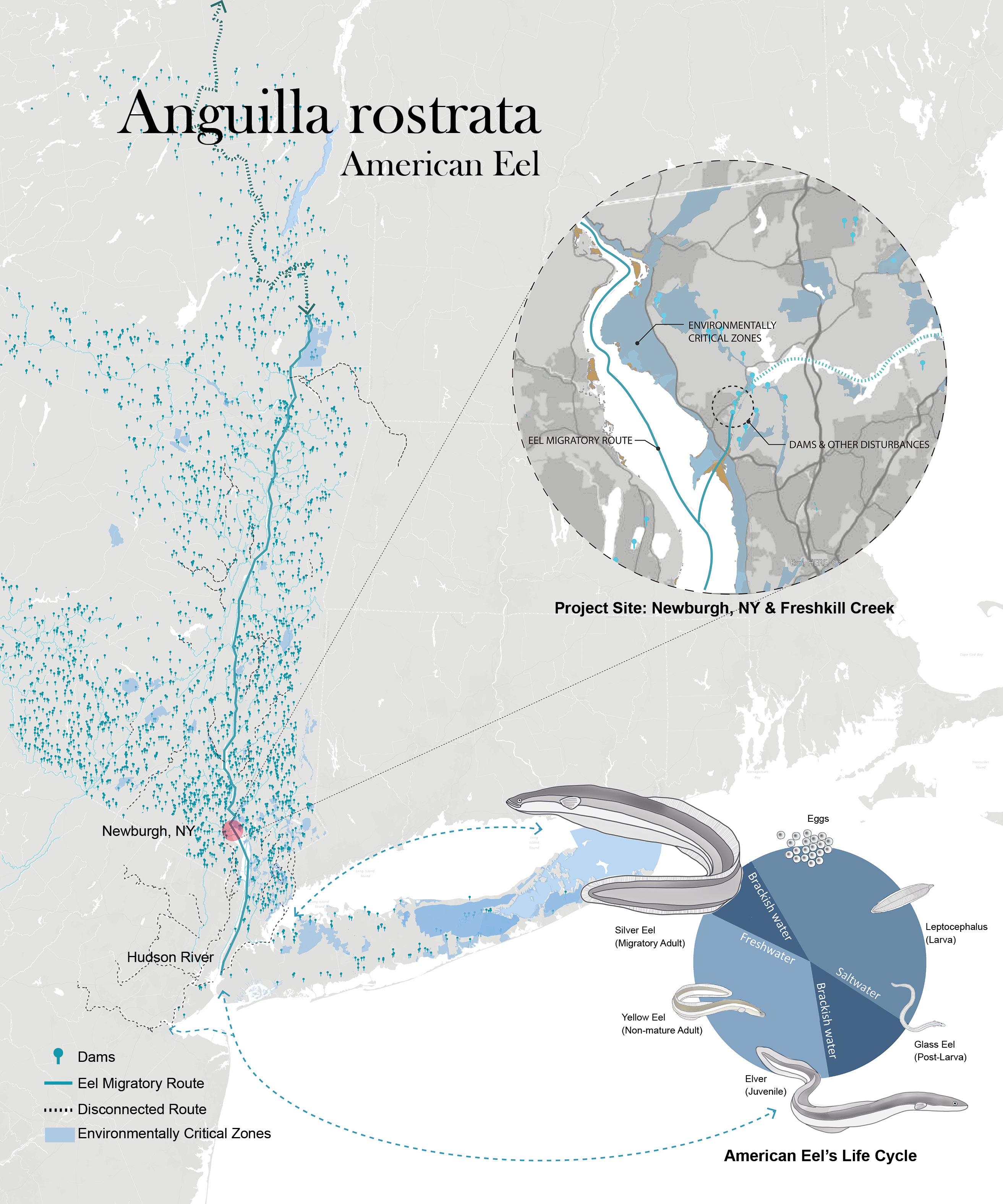
American eels are known to be mysterious nocturnal creatures. They spawn in remote and nutrient-poor places in the seas, and are rarely visible to people. However, what we didn’t know about eels is that they are migratory fish that travel long distances from ocean to small creeks and eventually return back to where they spawn, to die in the abyss. Even though eels are known to have a significant role in the aquatic ecosystem, their populations are plummeting. American, Japanese, and European eels have become scarce, with populations dropping by more than 90% in the past four decades. Restoration of eel populations is difficult unless we tackle the list of contributors to their decline: loss of habitat, dam blockage, fishing, pollutants, and changes in ocean currents. These factors make eel population management problematic. This design focuses on New York’s Hudson River where industrialization and human activities have caused many hindrances in eel migration, as well as loss of their habitats. The project consists of two parts. Part one, the “eel oasis,” creates habitat modules for eels on different parts of the Hudson River and tributaries where the ecosystem has become non-functional. These modules feature buoyant plastic reefs and limbs made of recycled plastics that offer eels a place to hide and rest as habitats on migration paths. Part two involves the construction of “eel ladders” on dams where glass eel (early stage eels) have trouble climbing up or using existing fish ladders. The eel oases and ladders together facilitate the eels’ long migration journey toward deeper creeks and smaller streams. In addition, these modules also serve as walkable trails for people to increase awareness of the eels’ presence and benefits to the aquatic ecosystem.
ARTHUR LAM (UNITED STATES)
BIRDS | Aves

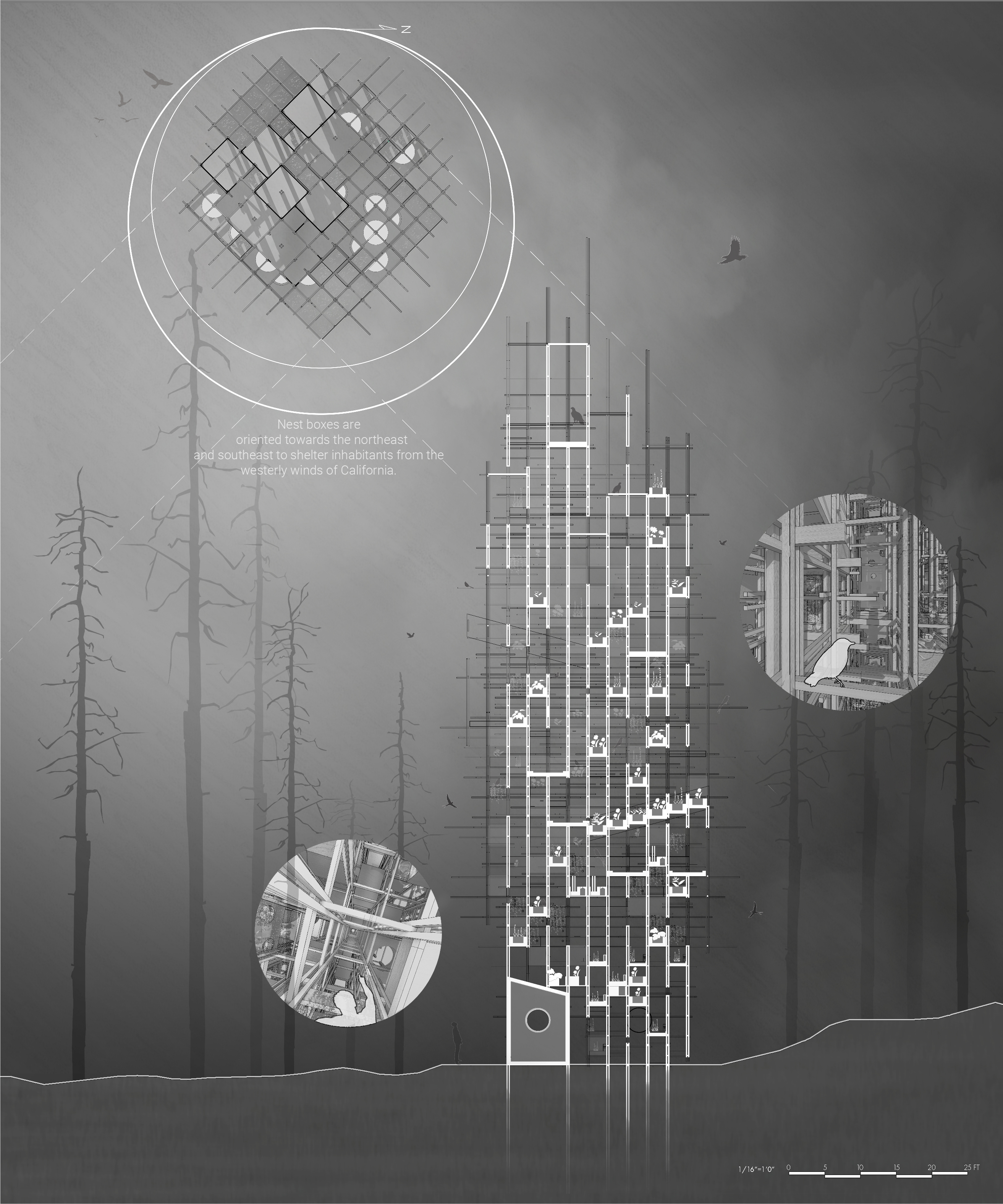
Birds have long been considered sacred in various cultures, acting as both the bridge between heaven and Earth, as well as symbols of hope and freedom. In spite of the important role they play in our lives, many of our actions are detrimental to their survival. As a result of the anthropogenic change in climate and build-up of dead trees in forests, the recent mega-fires in California have wreaked havoc at an unprecedented scale, ridding many native avian species of their food and shelter. Although it was once true that many forests and their ecosystems would regrow stronger than ever after a forest fire, the same can no longer be said given the current environmental state of our planet. With birds being some of nature’s most effective seed dispersers and exterminators, the intent of this design is to create a temporary safe haven for birds to return to so that they may facilitate the regrowth of their natural home. This can be achieved through the construction of a modular simulation of their natural environment. With regard to materiality and spatial quality, the primary structure mimics the scaffolding branches of a tree. Using the knowledge we have about these creatures, ideal spaces intended for private and public use can then be plugged into the scaffolding structure to provide birds with shelter, food, and plenty of seeds to disperse. Not only does this design aim to restore the ecological balance of the land, but it moreover strives to shed light on the critical role that these beautiful creatures play and the wonders that they can achieve.
FERAS ABDALLAH + CALLA ROSE OSTRANDER (UNITED STATES)
NORTH AMERICAN BEAVER | Castor canadensis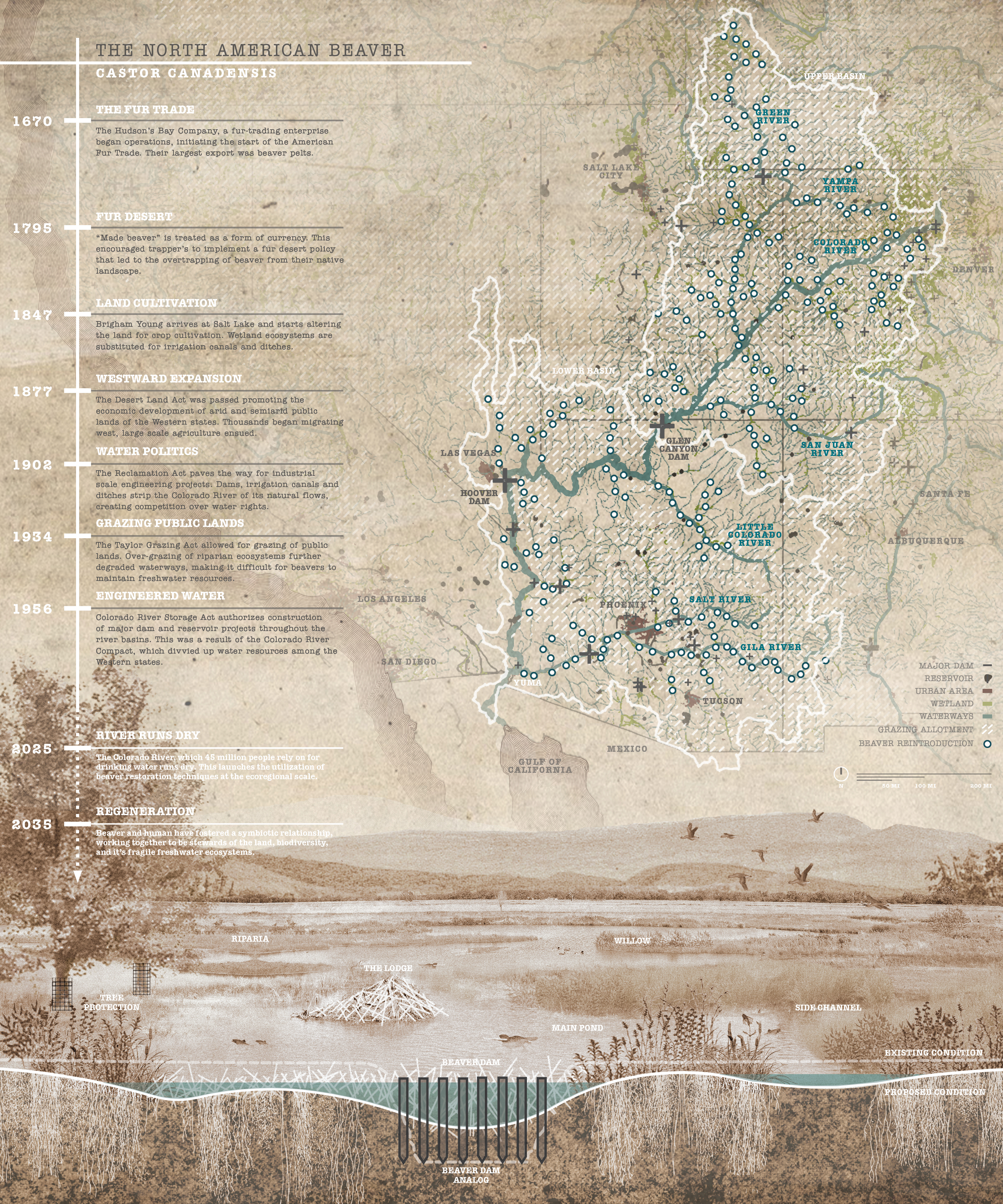


The American West is experiencing the most severe megadrought in human history. In a few years, if nothing is done, the Colorado River will run dry. This landscape, over-trapped and over-grazed, has been transformed from lush valley floors and wide river plains into defunct incised streams, disconnecting waterways from their respective floodplains and leaving bare, dusty desert. A human misconception led us to believe that industrial-scale engineering projects were needed to “tame” the “wild west” and bring European agricultural systems to what settlers saw as barren lands. The resulting mega-dams have perpetuated a false sense of water security. Water policies like “first come, first served” and “use it or lose it” have fostered a culture that aims to dominate and control nature, rather than one that seeks to cultivate relationships that thrive with it. An unlikely mentor for forging symbiotic relationships with cohabitors, and arguably the greatest landscape architect of Turtle Island, The North American Beaver has historically stewarded riparia and the small water cycles that hydrate the western landscape. Hunted almost to extinction for their pelts, beavers bring great value. They create conditions that enrich the soil, build robust wildlife habitat, and reverse the effects of aquifer depletion by raising the surrounding water table. Working with ranchers, rangers, farmers, and local populations, the installation of beaver dam analogs combined with holistic grazing management, help reestablish suitable homes for beavers who slow the waters, rehydrating the landscape. Solutions to degraded lands lie in physical intervention guided by empathy and a spirit of collaborative cohabitation with those that support the interrelated natural processes that shape the land. Supporting the presence of beavers in the landscape will help beavers rebuild the fundamentals that support the human presence in arid and semi-arid lands of the western United States.
